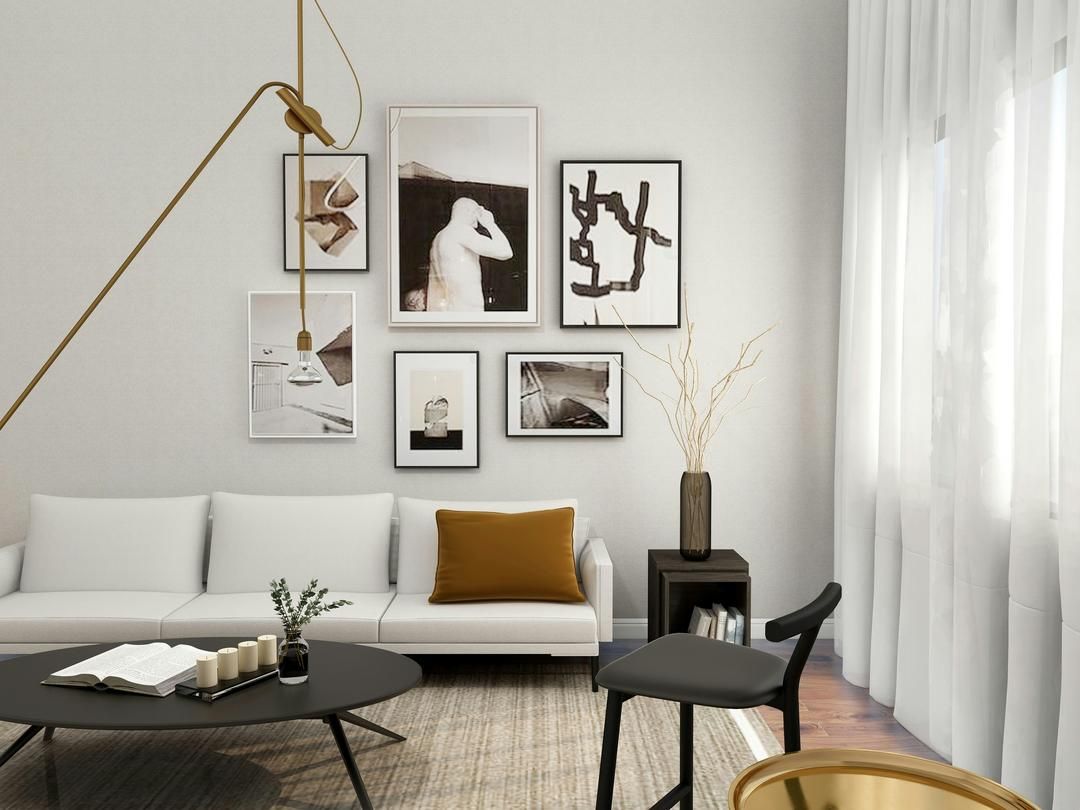After moving into a new home in the San Diego area, whether it’s a condo in Mission Valley or a house in North Park, it’s easy to feel pressure to get everything decorated right away. Unpacked boxes and empty walls can make it seem like life is on hold until every corner looks finished. That pressure only grows with quick-ship furniture, fast-changing design trends, and the urge to feel settled. But more local homeowners are realizing that slowing down often leads to calmer, more authentic spaces. When you let a room evolve, your choices tend to fit your daily routines instead of being driven by the rush to make everything look “done.”
What is slow decorating?
Slow decorating is about designing your home with attention, not urgency. Instead of filling every wall and surface in the first week, you live in the space and see how it behaves. You notice where the morning light hits in a La Mesa kitchen or how the evening sun warms a living room in Point Loma. You figure out which corners naturally become reading spots and which areas collect keys and mail. That time spent simply living in your home often reveals what you actually need—something no single shopping trip can do. Because this approach is about habits and rhythm, it works just as well in a downtown apartment as it does in a family home in Carmel Valley.
Why gradual decisions often lead to better long-term results
Fast decorating is the norm on social media—rooms go from empty to fully styled in a few days. It’s fun to watch, but it can lead to choices that don’t hold up. Maybe the sofa ends up too big for the room, or storage gets overlooked. People who take a slower approach tend to avoid those frustrations. They take time to measure, compare, and think through options. They’re less likely to make impulse buys and more likely to feel confident about big decisions like rug size or paint color. Over time, the room starts to reflect how they actually live, not just how they imagined it would look when they moved in.
What seasonal living reveals about your space
San Diego’s mild climate still has its shifts—bright, warm summers and cooler, breezier winters. A living room that feels perfectly airy in August might seem chilly in January when the coastal fog rolls in. A patio that’s ideal for morning coffee in spring might need shade by midsummer. Slow decorating gives you time to notice those seasonal changes before committing to permanent layouts or purchases. You might realize you need heavier curtains in one room, a cozier rug in another, or a different seating setup once daylight hours shorten. Over the months, these small observations help you make choices that work in real life, not just in a design plan.
How slow decorating helps clarify personal style
When people move into a new place, say, upgrading from a Pacific Beach apartment to a home in Clairemot, they often realize their old furniture doesn’t fit or their style feels uncertain. Slow decorating gives you space to figure out what you actually like. You can experiment without locking into a theme. Maybe you borrow a coffee table while you look for one that fits both your space and your budget. Simple shelving can help you test how much storage you really need before investing in built-ins. As you live with these temporary setups, patterns start to appear. You notice which textures, shapes, and colors you keep coming back to. Over time, your home feels cohesive because it’s built from experience, not imitation.
Using what you already have to evolve your home
Slow decorating doesn’t mean constant shopping. Often, it starts with rearranging what you already own. Moving a sofa closer to a window in a South Park bungalow can make the room instantly more inviting. Swapping a chair from the bedroom into the living room might balance both spaces better. Rotating artwork or pillows between rooms keeps things fresh without spending a dime. These small shifts help you see which pieces truly support your daily life and which ones don’t. Over time, your home becomes more functional and personal—without adding clutter or cost.
The influence of sustainable habits on slower design
Sustainability plays a big role in why more San Diegans are slowing down their decorating. Furnishing a home with secondhand or vintage pieces cuts down on waste and keeps quality items in use longer. According to the United States Environmental Protection Agency, furniture contributes to a meaningful amount of landfill waste each year, and many of those pieces still have usable life left. Choosing pre-owned, durable furniture fits naturally with the slow decorating mindset. A solid wood dresser from a local resale shop in Hillcrest can be refinished or repurposed for decades. A vintage dining table from a North County estate sale will likely outlast trendier, mass-produced options. Because you don’t have to buy everything at once, this approach works for a range of budgets and timelines.
Why observation is the first step
Slow decorating starts with observation. Instead of rushing to fill blank walls, you take time to see how your home functions. You notice where clutter builds up, which corners go unused, and which rooms carry most of the daily activity. When you do start making changes, you focus on essentials. Maybe your bedroom needs better window coverings before new art. Maybe your living room needs comfortable seating before a gallery wall. That early observation period helps you prioritize what actually improves daily life—and prevents wasted effort later.
How lighting shapes the feel of a room
Lighting is one of the clearest examples of why slowing down works. Natural and artificial light change throughout the day, especially in San Diego where sunlight can be intense. Colors that look warm in the morning might turn cool by evening. A corner that feels too dim in winter could be perfectly bright in spring. Watching how light moves through your home helps you make smarter choices about lamps, bulbs, and window treatments. Temporary lighting—like clip-on fixtures or string lights—can help you test what works before investing in permanent fixtures. Over time, this attention to lighting creates rooms that feel comfortable and easy to live in.
How a gradual approach supports emotional comfort at home
When a space grows with you, it ends up filled with things that actually mean something. A side table might hold books you’ve read, not just ones that look good. A shelf might display small reminders of trips, milestones, or local art you’ve collected over time. Artwork and photos find their place naturally instead of being hung all at once. The result is a home that feels lived in and familiar, a reflection of your life, not a weekend project.
Why slow decorating fits the way people live today
Slow decorating fits modern life because it accepts that things change. Jobs shift, families grow, and routines evolve. A guest room might become a home office one year and a nursery the next. When you don’t rush to define every space, it’s easier to adapt. This flexible mindset pairs well with the growing interest in sustainability, secondhand shopping, and personal design choices. Instead of trying to “finish” your home on a deadline, you give yourself room to make thoughtful updates. Over time, that slower pace leads to homes that feel grounded, personal, and easy to enjoy—whether you’re in a downtown loft or a coastal home in Encinitas.
If you’re thinking about listing your home and want to know what San Diego buyers respond to, reach out. We’re happy to share local insights before you make any big decisions about updates or decor.





